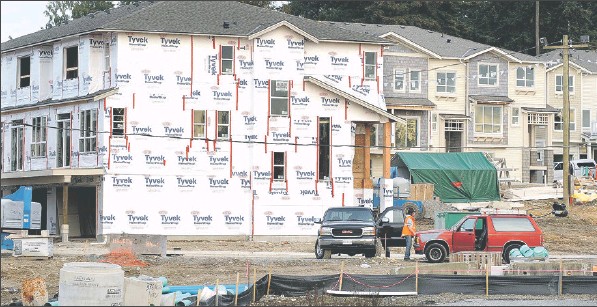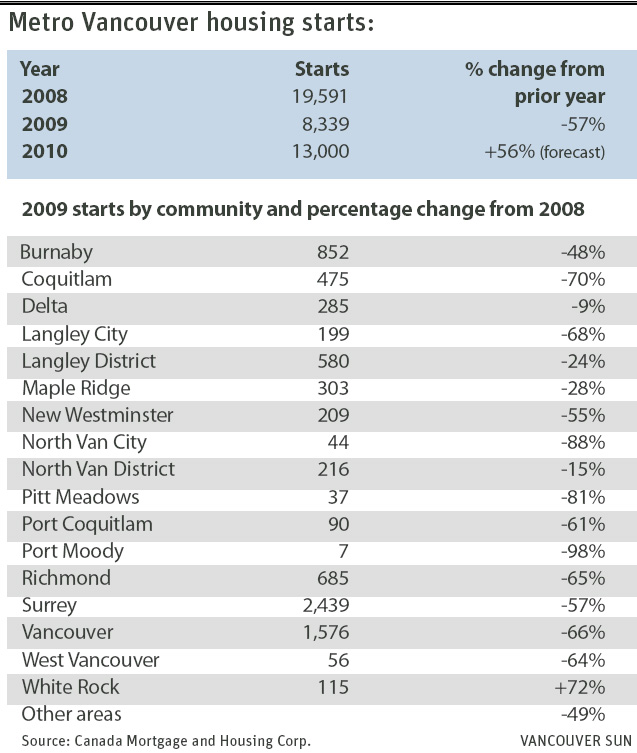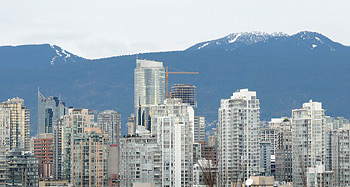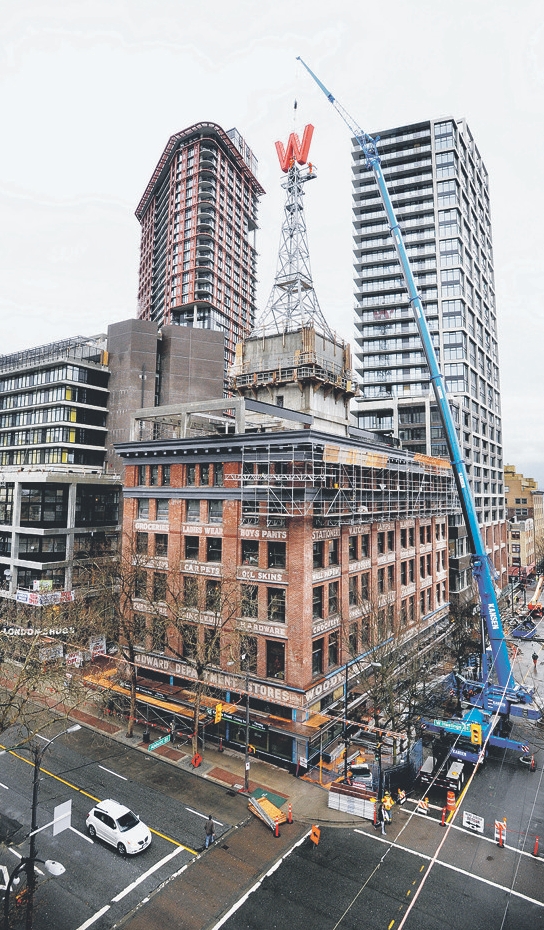Developers are moving ahead from a dismal 2009, with CMHC forecasting 13,000 starts this year
Derrick Penner
Sun

RIC ERNST / PNG New housing being constructed at Sunstone by Polygon in North Delta is just one example of builders climbing back from the economic trough of 2009, a low point in construction. Polygon president Neil Chrystal says 2010 has started out with a resurgence of home resales, which bodes well for new home construction. He says B.C. still attracts immigrants at levels that cannot be accommodated by low construction levels. Meanwhile, Wallmark Homes president Robert Wall says low interest rates are helping to fuel the demand for new housing projects but that financing is a concern.

The Onni Group kicked off 2010 by launching three new suburban highrise condominium projects, Polygon Homes laid out a plan to increase its construction by 20 per cent, and across the industry builders are ramping up activity.
It’s not so much a new building boom, though, as a crawl up from the dismal bottom of 2009, which saw builders start work on just 8,339 new homes in Metro Vancouver as counted by Canada Mortgage and Housing Corp.
That was the lowest number since 2000 and the second lowest since 1962.
By comparison, in 2008, Metro Vancouver’s builders racked up 19,591 starts, one of the region’s best years since the 1993 peak of 21,307 units.
Canada Mortgage and Housing’s forecast is for 13,000 starts this year, but the final numbers will depend on how an expected mid-year increase in mortgage rates affects consumers’ ability to buy, how willing banks will be to extend developers credit and the general state of the economy.
And while 2009 was a low point, “I think everyone is feeling a lot better about this year compared to last year,” Neil Chrystal, president of Polygon Homes Ltd., said in an interview.
This year, he added, has started with a resurgence of home resales, which bodes well for new home construction, and the province still attracts immigration at rates that cannot be accommodated by the low levels of construction seen in 2009.
Chrystal predicts near-historic-low mortgage rates will also continue to fuel sales.
“Things are looking up. Provided that the banks are able to loosen up and get the money out there to developers, most developers will be looking to build more units.”
Financing is a concern for builder Robert Wall, president of Wallmark Homes, who sees the low interest rates helping fuel demand.
“I think there is a lot of pent-up demand, a lot of immigration and bankers are not advancing much money,” Wall said in an interview. “So that’s going to hold prices. There’s still not a lot of supply on the market.”
Chris Evans, executive vice-president of the Onni Group, said the tighter financing requirements that banks put in place after the financial crisis definitely still exist.
“Financing took a year off, in a lot of respects,” Evans said.
He said developers now need to put more of their own equity into projects, and those projects require a higher percentage of presales with buyers putting down bigger deposits.
Evans said projects now typically require 20 to 25-per-cent deposits, whereas at the height of the building boom, developers were pre-selling units with deposits as low as 10 per cent.
The recovery of Metro Vancouver’s resale market, however, has spurred Onni into taking on new projects.
“I think for us, we started to look at [plans for] 2010 probably as the summer rolled round and the market seemed like it had found some resilience,” Evans said.
“There had been a correction in prices, and at that point there had been some correction in construction costs.”
With those lower costs, Onni, in November, re-priced and relaunched the Main Street area V6A highrise it had taken off the market in 2008 without any sales.
“We re-priced it at 25 per cent off where we launched it in 2008 and found great success,” Evans said.
Onni launched two other projects with strong presales last fall. One was called Social, a failed project that Onni took over from the Eden Group, which tried to market it in 2007; the other was The Mark, a large tower at Seymour and Pacific.
That emboldened Onni to launch new projects, one each in Coquitlam, Port Coquitlam and Port Moody, albeit within the new pricing environment, which Evans said ranges from 15 to 20 per cent below peak values during the boom.
“Presales are probably selling at a bit of a discount over the [resale] market pricing, which is a huge change from 2005 to 2008,” he said adding that that “is probably the correction that needed to happen.”
Market analyst Jennifer Podmore Russell noted that most projects that relaunched after the stall in construction have revamped their designs — changing floor plans and price points — to reflect new realities. “I’d argue that half of the buildings that have launched [in recent months] are not what they would have been a year ago,” Podmore Russell, a senior manager with the consulting firm Deloitte, said.
In a way, developers planted the seed of the current rebound by halting construction as quickly as they did, said Tsur Somerville, director of the centre for urban economics and real estate at the Sauder School of Business at the University of B.C.
“A lot of developers did a good job at cutting back before the market really dried up,” Somerville said in a news release. “I think that meant they were not horribly exposed [to the downturn].”
But he said the fact that developers also weren’t buying land during the correction will have some influence on how quickly they will be able to ramp operations back up.
“What that means is that new supply, in the short run, is really going to come from projects that were underway and mothballed rather than new projects,” Somerville said.
© Copyright (c) The Vancouver Sun











